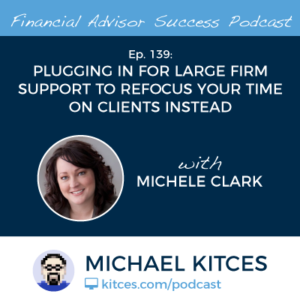As the financial advisory industry continues to move away from being primarily product-driven (where client ‘relationships’ were primarily transactional sales interactions, and advisors could go months or even years without interacting with some of their clients after the sale was closed) and towards a recurring-revenue ongoing relationship model (where advisors provide continuous, ongoing advisory services to their clients), the total number of clients that any one advisor can handle at any given time has decreased dramatically. Because, not only are there significant time constraints around actually doing the work necessary to serve those clients well (not to mention the time needed to actually find new clients and convince them to work with you), but there are cognitive constraints as well, given that physiologically our brains (as humans) can only keep track of a limited number of interpersonal relationships to begin with!
Traditionally, having ‘too many’ clients was rarely a problem – as advisors just focused on their best clients for repeat business opportunities – but in the modern relationship-driven model, all advisors will eventually reach a point where they simply don’t have the capacity to take on more of those ongoing relationship clients and continue to grow the firm. In other words, the advisor has reached a ‘Capacity Crossroads’, and must make a conscious decision about the path to pursue next - either stop growing, or increase the firm’s capacity by bringing on additional staff (and possibly another advisor) in order to continue growing the firm. The problem, however, is that even for those who choose the path of continued growth, once an advisor crosses that capacity threshold, not only are any additional clients less profitable (due to the higher overhead costs incurred by increasing staff), but the advisor also has to manage that growing number of team members… which is rarely a goal for advisors who decided to strike out on their own to serve clients (and not manage employees)!
For most financial advisors, the choice at the Capacity Crossroads becomes a decision about long-term income potential, where the advisor has to decide whether to become a ‘lifestyle practice’ and stop growing (flat-lining their growth and income), or to hop on the eternal hamster wheel of growth and work towards building an enterprise business to continue to grow their income. Yet the reality is that, for those who do decide to go down the enterprise path, there is little evidence to suggest that there are any economies of scale growing down the road from being a ‘small’ solo practice to a multi-billion-dollar firm. And, in fact, top-performing solo advisors often have the same take-home pay as the average partner at a $1B+ ensemble anyway!
In addition, the reality is that the choice at the Capacity Crossroads isn’t just between Lifestyle or a ‘go-big’ enterprise to maximize shareholder value in the first place; there is another choice, which is to become a “Small Giant” advisory firm, which doesn’t grow just for the sake of growing, but rather is built intentionally to be ‘great’ instead of ‘big’. In essence, Small Giants seek to be a purpose-driven business, typically one that is able to serve not only the clients/customers, but also the employees, vendors, and the community. In other words, the point isn’t to maximize just shareholder value, but rather to simply be excellent at what they do, while focusing on serving all of their stakeholders, including owners, employees, vendors, clients, and communities. Fortunately, it also turns out that small giants also happen to be steady growers, and are able to be rather profitable to boot!
Ultimately, though, the key point is simply that, if there isn’t that much difference in the long-term wealth-building potential between a lifestyle practice, small giant, or enterprise firm (especially given the time, effort, and reinvestment cost required to build a multi-billion-dollar business), then the answer to the question of the best path to take when you reach the Capacity Crossroads simply comes down to personal choice. Which is important, because in the end, the best way to build a practice that maximizes your own happiness as an advisor isn’t by allowing growth to dictate the role you fill in the business, but by intentionally setting a vision for the type of business you want to build in the first place!

 Welcome back to the 139th episode of Financial Advisor Success Podcast!
Welcome back to the 139th episode of Financial Advisor Success Podcast!
